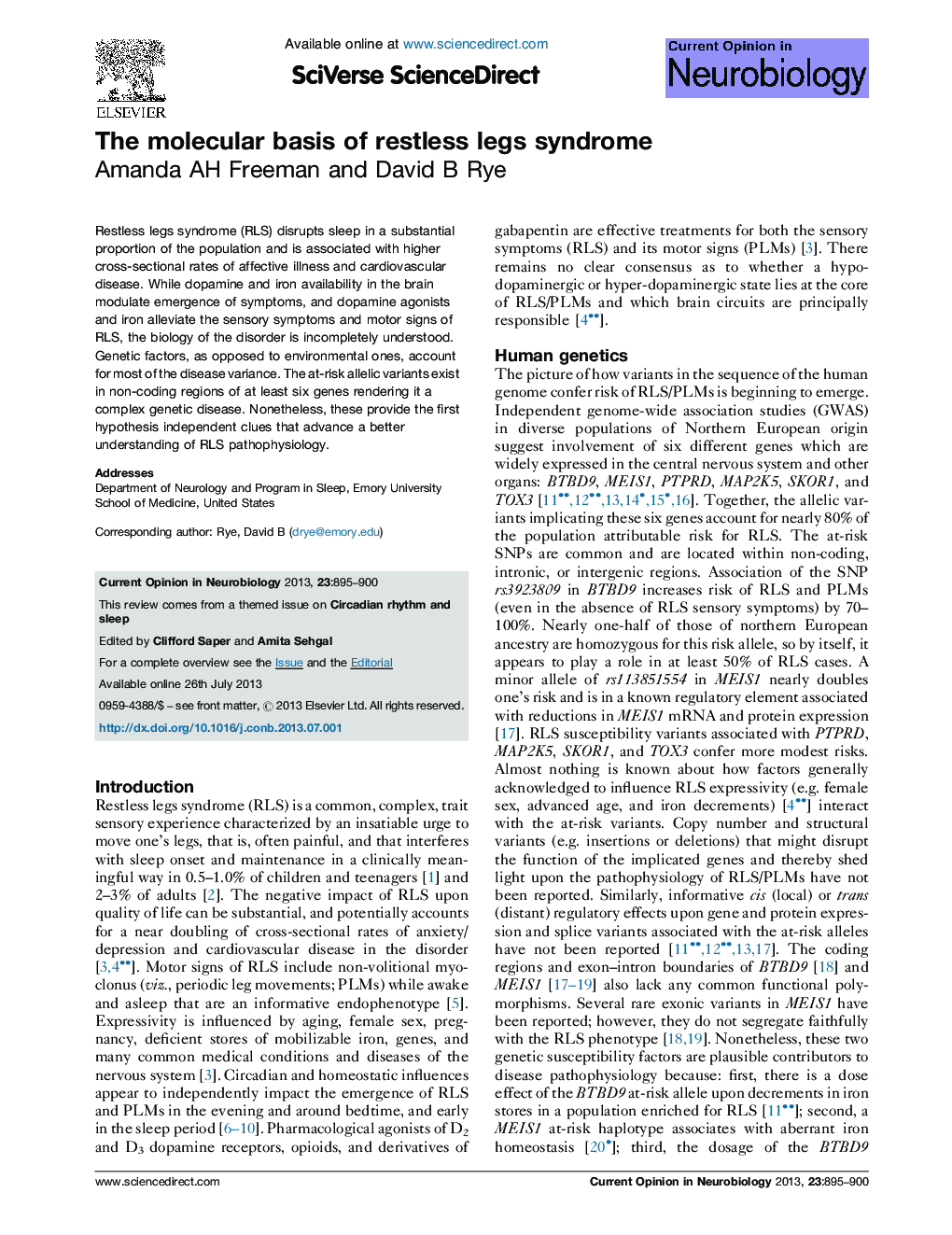| کد مقاله | کد نشریه | سال انتشار | مقاله انگلیسی | نسخه تمام متن |
|---|---|---|---|---|
| 6266640 | 1294915 | 2013 | 6 صفحه PDF | دانلود رایگان |
- Genetic risk factors associating with RLS have potential pleiotropic and epigenetic effects.
- Drosophila and murine model systems implicate BTBD9 in causing RLS.
- BTBD9 and MEIS1 mediate iron and dopamine availability both directly and indirectly.
- Other gene candidates implicated in RLS require evaluation in animal and experimental model systems.
- Tissue specific gene expression profiling will hasten mechanistic understanding of RLS.
Restless legs syndrome (RLS) disrupts sleep in a substantial proportion of the population and is associated with higher cross-sectional rates of affective illness and cardiovascular disease. While dopamine and iron availability in the brain modulate emergence of symptoms, and dopamine agonists and iron alleviate the sensory symptoms and motor signs of RLS, the biology of the disorder is incompletely understood. Genetic factors, as opposed to environmental ones, account for most of the disease variance. The at-risk allelic variants exist in non-coding regions of at least six genes rendering it a complex genetic disease. Nonetheless, these provide the first hypothesis independent clues that advance a better understanding of RLS pathophysiology.
Journal: Current Opinion in Neurobiology - Volume 23, Issue 5, October 2013, Pages 895-900
